Media coverage
Share

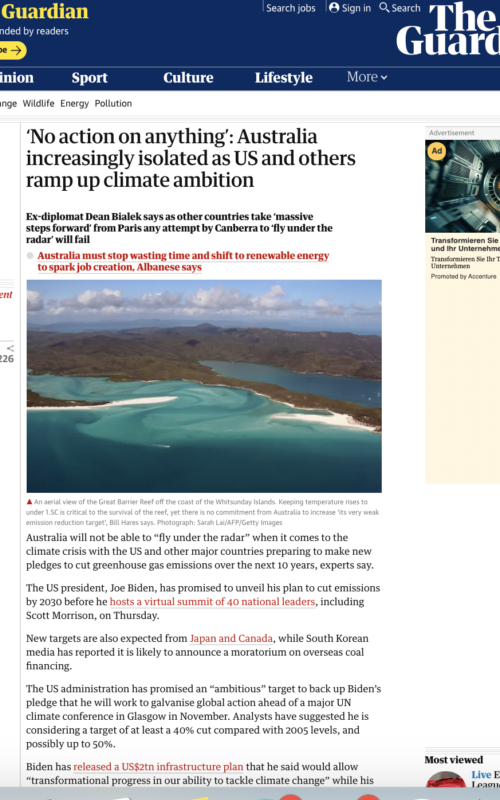
Australia already has the third-highest per capita emissions of any country and is “set to fall further and further behind”, comments Bill Hare, CEO of Climate Analytics.

BBC World Service
Dr Fahad Saeed is interviewed on the BBC World Service's Newsday programme looking at dangerous heat events in South Asia - begins at 18m22s.

Sky News
Fatal heatwaves could affect hundreds of millions of people as global temperatures rise, a new study estimates. Heat stress events are considered potentially deadly when 'wet bulb' temperatures exceed 35C for three or more days. In this new research, the team found that, with an increase of 2C, there could be 774 million exposures to potentially unsurvivable heat by 2050. At 1.5C, that number would be nearly half, at 423 million.
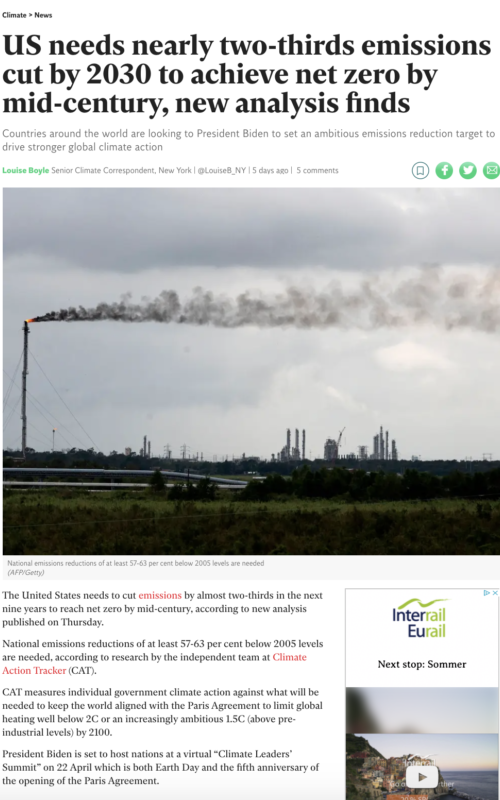
The Independent
The United States needs to cut emissions by almost two-thirds in the next nine years to reach net zero by mid-century, according to new analysis from the Climate Action Tracker. “It would be a major boost to international climate cooperation. Having the US taking such strong action would reverberate across the world, and result in other countries also stepping up to adopt the kind of targets they need to make global net zero a reality,” said Bill Hare, CEO of Climate Analytics.
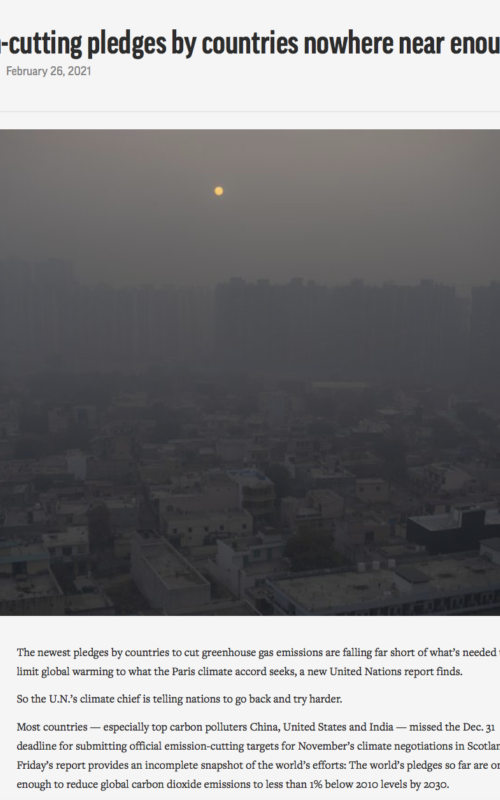
Associated Press
The world’s climate pledges so far are only enough to reduce global carbon dioxide emissions to less than 1% below 2010 levels by 2030, according to the UNFCCC. Instead of limiting the world to only 1.5 degrees Celsius (2.7 degrees Fahrenheit) of warming since pre-industrial times — the more stringent of two Paris accord goals — the data shows that world “is headed to close to 3 degrees Celsius (5.4 degrees Fahrenheit) and a global catastrophe if this is not curtailed quickly,” said Bill Hare, director of Climate Analytics.
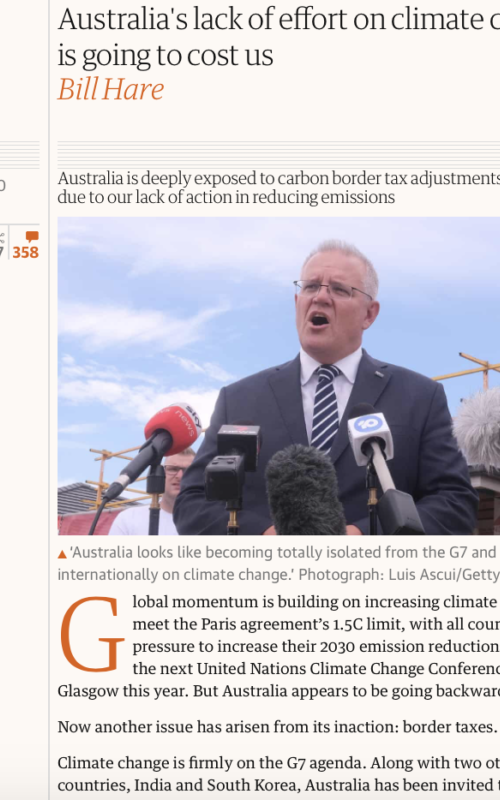
The Guardian
Many large countries, including the US, the EU, and Australia's key coal and gas markets China, Japan, South Korea, are looking at deeper emission reductions. But Australia appears to be going backwards. Now another issue has arisen from its inaction: border taxes - Climate Analytics CEO Bill Hare commentary in The Guardian.
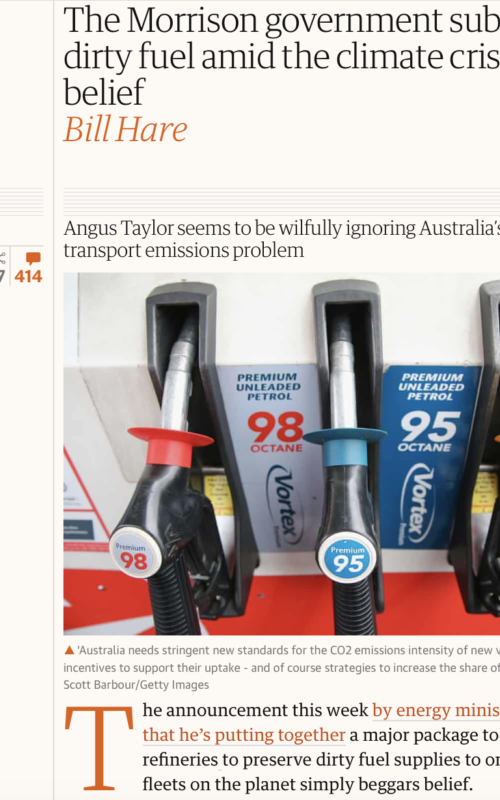
The Guardian
The announcement this week by energy minister Angus Taylor that he’s putting together a major package to prop up oil refineries to preserve dirty fuel supplies to one of the dirtiest car fleets on the planet simply beggars belief. It doesn’t have to be like this. Commentary by Bill Hare, CEO of Climate Analytics.

Carbon Brief
A new study lead by Climate Analytics researchers, published in Nature Communications, shows that empowering women through improved healthcare, education, and representation in government could help societies adapt more quickly and easily to the impacts of a changing climate.
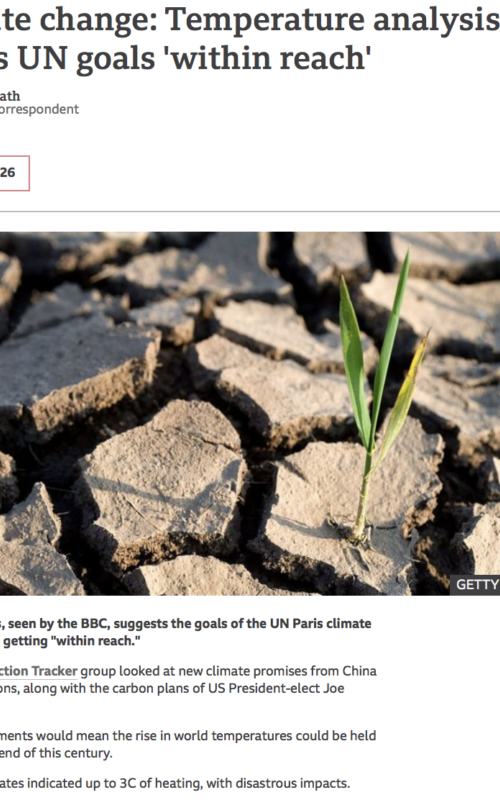
BBC
A new analysis, seen by the BBC, suggests the goals of the UN Paris climate agreement are getting "within reach." The Climate Action Tracker group looked at new climate promises from China and other nations, along with the carbon plans of US President-elect Joe Biden. These commitments would mean the rise in world temperatures could be held to 2.1C by the end of this century.
Previous estimates indicated up to 3C of heating, with disastrous impacts.
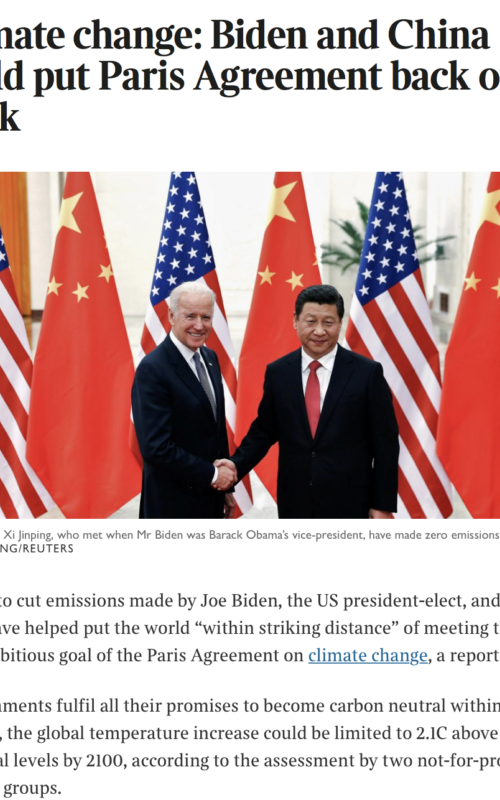
The Times
Pledges to cut emissions made by Joe Biden, the US president-elect, and China have helped put the world “within striking distance” of meeting the most ambitious goal of the Paris Agreement on climate change, a report says. If governments fulfil all their promises to become carbon neutral within 30 or 40 years, the global temperature increase could be limited to 2.1C above pre-industrial levels by 2100, according to the assessment by two not-for-profit research groups.